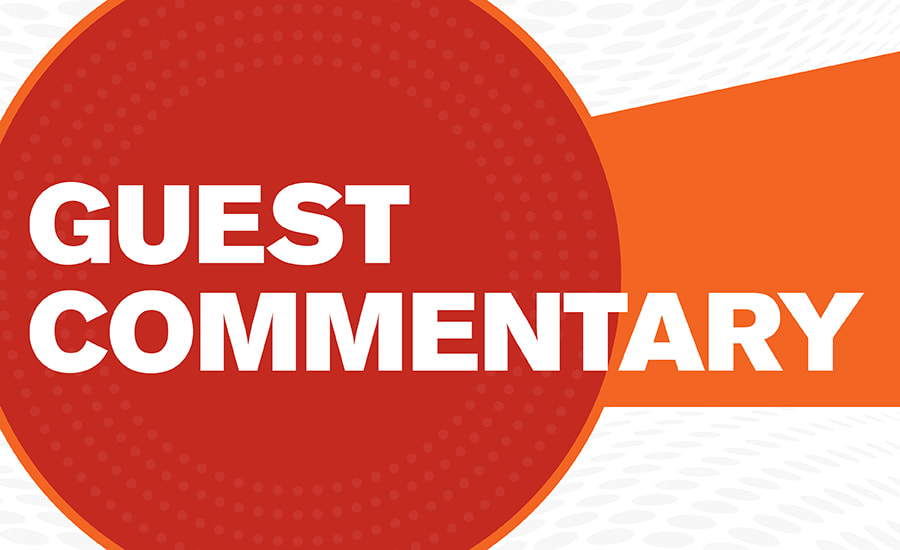|
THIS POST ORIGINALLY RAN IN THE HVAC NEWS. CHECK THEM OUT HERE
You’ve heard it a hundred times — at every seminar, and every guru has told you the same thing. You may have heard terms like “Customer experience” and “Customer journey.” Ring a bell? Here is my follow-up question. It’s almost 2019 … so what does that mean today? If you have been in this business long enough, you remember when just telling customers that you used drop cloths and shoe covers was enough to make you stand out. Maybe you went crazy and even performed background checks and drug-screened your team. That was what customers said they cared about. How is that working out for you today? Customers have moved on … they have been taught to move on by all their other consumer experiences. Don’t believe me? Which of these features have you used in your everyday life?
Even worse, which of these seem familiar?
If we were to look at how your business is functioning today, is it wildly different than it was 10 years ago? Still calling people to see if they are home before dispatching the tech? Still sending postcards to remind them to schedule that PM? Maybe a “few” follow-up calls to remind them? A couple questions: How many of us still have a landline? And how many of us answer an unknown number on our cell phone? “It is no secret that our industry is in a unique place. For those lucky to have rebuilt or been unscathed by the last economic downturn, we may be set to head into another economic recession, depending on who you listen to for forecasting. However, this time it is in conjunction with a decade-long streak of a shortage of ‘qualified’ help.”Don’t get me wrong, I still do some of this stuff, too, but we should all be aware that there are many companies and even industries that are making a living from our inability to change or adapt. Industry veterans like Charlie “Tech Daddy” Greer have been telling us for years to “Evolve or die.” So how are we doing with the “evolution?” Not to be the bearer of more bad news, but I believe it will get worse before it gets better. There are many companies looking to take advantage of us. Now, if you have been in the industry for more than a decade, you may have heard stuff like this before. “Yeah, yeah, Eddie … we know the story: The big-box stores are coming to take us all away … the utilities will swallow us up … the consolidators will steal the market.” These are all fair points. My counterpoint is, they did. They all have a share of our business in small and large ways. At this point, you may be thinking, who is this guy to be telling us this stuff? Please know that it comes from a place of love. Having worked in many positions in the industry, I can appreciate all the hard work, dedication, and passion we put into our businesses these days. If anything, it seems like we are working harder and harder, and we all seem to be getting squeezed a little bit more. It is no secret that our industry is in a unique place. For those lucky to have rebuilt or been unscathed by the last economic downturn, we may be set to head into another economic recession, depending on who you listen to for forecasting. However, this time it is in conjunction with a decade-long streak of a shortage of “qualified” help. If you add all of this up with the onset of new technologies and lead generation tools, it makes it easier for a new and small shop not just to compete, but actually, from the consumer perspective, look every bit as good as you, and sometimes better. So, now that I have dispensed all the doom and gloom, what is to be done? Well, the good news is we are not alone. We are seeing partners who are joining our industry and looking to equip us with the tools needed to deliver a modern, frictionless consumer experience. These tools are like all the other tools in our truck; we have to use them to get the benefit, and if we do, they will improve our businesses. If we look at the whole arena of the home services “customer experience,” we see many opportunities that contractors have to take advantage of when they understand and leverage the concept of the “customer journey.” Customer experience is a really broad term that should be defined. First, we should state that customer experience should be intentional. You should have a defined and documented intent for your organization of what you want your customer experience to be. Now, bear with me because this sounds obvious, but check around with two or three of your team members and ask them to define, in one or two sentences, what they think you want your customer experience to be. I’ll give you a hint: The small ambiguities in the different answers matter. Anything less than 100 percent clarity from you can leave room for interpretations. This difference in and of itself is not bad. However, if you want to scale or if you have any turnover in your staff, you may run into problems. Trust me: I learned this lesson the hard way. I think it was Aristotle who said, “Nature abhors a vacuum.” Guess what … so does your team. If there is not a written, trained, and tested goal for what you want your perfect customer experience to be, then you may want to replace that vacuum with your intent. This does not have to be complicated. I am a big proponent of the simpler, the better. Plain language along the lines of “We want to keep it easy for our customers at all costs,” “We want to remove anything that feels like friction to our customers,” or “We want to be the most convenient company in the area to do business with.” Think about the power of those stated intents. Everyone in your organization can now take real, actionable steps. This clarity unleashes your team to have agency in their role and for them to feel really engaged in the overall company goal. Isn’t this knowledge — and the related activities — the definition of synergy? Your team is performing many tasks throughout their day. All of them impact your customers’ experiences. It can start by affecting the way customers find you: Is your website set up to be easy to read? Can people look at it for 10 seconds and get a sense of who you are, what you do, and what they should do next? To learn more, Google “website grunt test.” Donald Miller has a lot of free content that can lead you through the process. Again, if you feel like this is too high a standard to aspire to, merely fall back to how you use websites. When you are planning a night out, how long do you spend on a restaurant website? Minutes? If it’s a poor, cluttered website, chances are you are using the back button, and you’re on to the next restaurant. Unfair? Maybe. To be clear, it could be the best restaurant in the world, but if you never get there to order the food, you will never know. It is similar for all of us in the home services business. If we don’t book the call, it really doesn’t matter how technically proficient your or your team are. The customer has to decide to use your company before they can have the fantastic experience and become a raving fan. Now, this is just one example, and it really is just the start of your customer journey. Every single one of your customers has a unique experience that they bring to you. Understanding the customer journey is critical for you if you want to move the customer seamlessly from a prospect to a loyal customer. The good news is that it’s 2018, and the tools and partners exist to help you with all of this. More than ever, you can run your business by playing to your strengths and allowing partners and associations to help you in the areas where you need it. If all of this still seems like too much work or not something that you want to focus on, I understand. I truly do. It would do us well to remember the cautionary phrase: “If you don’t know where you are going, every road will get you there.” Publication date: 12/17/2018 Want more HVAC industry news and information? Join The NEWS on Facebook, Twitter, and LinkedIn today!
0 Comments
"Complexity Demands A Tax" - David Christian Do you ever find yourself having to tell your team about things multiple times? Do you ever have to keep coaching on the same topic? Do you ever wonder why? Do you ever think “why are these people not getting this”? I have a theory, well it’s not mine it can be found in the study of cosmology, biology even geology. It’s kind of a science thing. It’s the theory that all things move towards entropy. Everything wants to break down. Always. Leave something alone and untouched, and it will break down. Try it, leave a piece of fruit on a table for a while and come back and check on it and see how it is doing…it will break down. It’s a universal principle. Business is no different, without intervention the machine we have built will deteriorate. Now, the level of intervention we are discussing may be different, for well-oiled machines it may be as little a strategic planning session once a year or a quarter, for others, it may be a daily or hourly hands-on effort. That’s okay. It's natural. The thing is that you can impact the amount effort and attention required. There are two main ways to impact how much time you have to spend on combating the regression. The first way is by far the preferred, simplify. That’s it. Simplify. You probably see the whole business or maybe your department and understand the interplay and dependencies of all the different process you have. but this changes as you grow. As you grow and can no longer manage everything on your own, it is widespread practice to place other people in the middle of the business and the process’ required to run your business. This addition of people certainly frees you up, but the tax you pay is first the cost of what you have to pay these people. However, there is an additional and less obvious tax that you have to pay. It is complexity. There is a shortcut that we take as we grow, we sometimes add personnel without really looking at the process that we have “developed” to see if we can simplify them. Truth be told we don’t “develop” our process, they tend to evolve, and in many cases, they grow to fix outliers. Tell me if this sounds familiar. Something happens, maybe something bad, in truth it could be better described as painful. We decide we don’t want to have it happen again, so we create a “process.” We get everyone together and have “meeting” about it and make sure everyone knows just how serious we are. This is fine; it can even be positive, the trouble comes as we scale. The more process we add together, the more complex we become, that complexity shows up in so many places. It is the tax we pay for not simplifying at all turns. Adding people to handle the complexity of your business has its inherent issues. How easy is it for you to communicate a change in your organization? The more people in the chain, the more you can do but the harder it can be to communicate, It's tempting to think this is normal and preferred. I see so many companies head down this path as a way to scale. Its okay, but it is no alternative to simplifying. It can show up in how long it takes you to onboard a new hire, ask yourself, how much different is that timeframe today than a few years ago? Can people jump into help others on the team, without knowing a lot of specialized material? Don’t get me wrong, if we are talking about brain surgery I want someone to go through a long process, but how many of us do brain surgery every day? It can show up in frustration within your team if you don’t have a handle on that frustration it may start to show up in employee turnover. So what's the key to moving towards simplicity, next time you are thinking of adding a team leader, supervisor or manager ask why. Ask what options you have to make the current process simpler. Ask what if I couldn’t find the right person, what if did not have the money to add this person. You may end up adding the person, but the compound effect of organizational simplicity will pay off in more than just dollars. Turns out we really should just keep it simple. As my kids have grown older, or maybe as I have just grown older, I wanted to collect some of the things I have found useful over the years. Some things people were kind enough to share, more often I had to learn the hard way. Each of these things could be expanded upon, and maybe I will one day. Hope you enjoy.
Update October 2018 - I did end up giving that talk, here is the deck. Enjoy.
Millennials aren't that different from us, this may be an unpopular position, but hear me out. I don’t remember when I first started hearing about Millennials, but after the first time, I pretty much listened to the same thing every time. Concerning those that hold different opinions, I believe Millennials are not different, times are. We get mad because they want what they want. Sure they may not want to start their day at 7 am. So what? They don’t want to work past a particular time of day. I get it. They want to feel they can make a difference. Who doesn’t ? Sure they value their time and their agenda. Don’t you? Insert all the other things you have heard at the sessions about the millennial generation and their work habits… Here is the thing though… It is the times that allow these choices. Maybe we are just mad because we couldn’t get that choice. I grew up in a different time. I was conditioned by a job environment that meant I couldn’t push back as much on employers to make concessions. Fair enough. I wasn’t mad it was just the way it was. I worked in an industry that expected certain things, and everybody around me seemed to be ok with that. So I got in line. We all signed up for a great promise. Millennials watched that promise dissolve for their parents in rare, unforgiving financial times. So they drew their conclusions and made their corrections in the way they want to balance the scales. No, I believe that generations are the same. People are pretty much the same. Same needs and wants. Same desire. Just the times make us different. Here’s the thing, we need this generation in the places we work, and we don’t make them feel welcome when we keep using tropes and stereotypes…very rarely does describing differences lead to unity. I could write more, but I think you get what I am saying… Let me know your thoughts in the comments, am I wrong, if so tell me, if you agree, let me know. Almost any technology we buy these days comes from the factory with default settings.
What are default settings? These are the settings that the factory thinks the majority of operators will find useful. They have much utility. We do not have to take the time to determine basic things like font size or programs we might want to use. There are so many decisions made that allow us to pull it from the box and start using it. Great right? In addition to default settings, there are programs that "run in the background." Again these programs are great because they allow us to maximize our usage with limited input. Here's the thing... we are just like that laptop. We have programs running in the background and factory settings that determine our operational effectiveness. These background programs affect most areas of your life, the relationships you end up with, the salary you have and the job you take, even the car you drive. Like most programs, they are not necessarily bad. Many are useful, but we need to know what is running in the background. Left unchecked these factory settings and programs can limit your performance. Every fact you learn is filtered past, processed, and compared to every other thing you have "learned in the past." The factory in our case is the environment we were exposed to in our formative years. How you think about money, you better believe that you picked up those ideas from the things you heard or experienced as a kid. The health of the relationships you accept, we need to understand where the ideas about what we thought we wanted or even deserved in the relationship were set. The good news is like all settings they can be changed. Sure you may need to learn a little hack here or there, you maybe even need to learn a new operating language or install a patch over some damaged code. However, that is okay because as long as we stop long enough to look at what we have running in the background, we can make changes. What new upgrades will you install? I don't know of two words that do more damage to constructive communications than these two words; always and never.
Think about it; you are discussing something, maybe a contract with a vendor and they say something like "well you guys never get here on time" or "why do we always have to do this with you guys." These statements are pregnant with blame and cause our ego to get defensive and react instead of respond. Let's all resolve to eliminate absolutes from our dialogue...not all the times obviously. They are ok words, even good words, the problem is how we use them. Too often we use them as declarative absolutes. These very often can't possibly be true. The trouble with using these words is how can someone take us seriously if he or she know that we are just plain wrong, at least from their perspective. These words give people permission to dismiss and ignore any point you are trying to communicate. If the goal of the conversation is to seek clarity of understanding so both/all parties can move forward with mutual alignment, then our words should be selected to allow us and others to stay engaged. What difference could that make if we speak with a desire to understand the other party, not just waiting for our turn to talk? To your team? To your business? To your family? To our communities? Speaking to really understand rather than just waiting for our turn to be understood. I have come to believe most people have a desire for three things in life, to be seen, to be heard, and to be understood. Who in your life needs you to understand them today? Here is Stephen Covey talking about how to have transformative conversations in a 3-minute video. So simple, but so seldom done. See it here. If you are paying attention, of course, the most important people that need us to improve our communication are our loved ones. What other absolutes should we eliminate?  My dog has nothing really to do with this post, but I do love her and wonder what's in her head at times. I am sure she wonders what is in mine at times. I've been thinking about this a lot lately. I was reminded of a theory I have been sharing with a few teams I work with. There is a concept out there called "Regression to the mean" or Reverting to the mean." It's an idea used in Statistics and Investing. Here's a quick snapshot from Wiki something. Why should we care? We all have an "idea" or self-perception of who we are and what we think we deserve. This perhaps more than anything else is at the core of where we find ourselves today. This concept is part of the makeup of our mindset. Fixed or Growth. For more on mindset check out this great book by Dr. Carol Dweck here Start with being honest. We should have a realistic and honest assessment of how we view ourselves. We need to know our true baseline to understand how it is affecting our performance and relationships. At times we operate below our baseline level, This can cause us to get in a funk or a rut. It manifests as poor performance. Usually, when this happens, we have a talk with ourselves and are generally pretty good at getting ourselves back up to the level we think we should be operating at. Unfortunately, the same principle applies when we start to see results above our perceived baseline level. The same voices in our head go to work and start to tell us any success we had is a mistake or a fluke. We sit waiting to be found out. Imposter syndrome kicks into overdrive. It affects our performance. As we communicate, we telegraph our mindset, and sooner or later the results start to look more like we expect and truthfully we get more comfortable, relieved that we will not be found out. Answer We need to consciously be raising our level of comfort and see ourselves as being a top performer. This can be hacked simply with daily affirmations or pattern interrupt reminders. Our brains have the ability to create new neural pathways. We just need to be consistent and as diligent about commitment to changing how we see ourselves. Of course, the secret is that this is not just a "work" thing...if you fix your self-perception in one area, it is inevitable that you will see improvements in all. But that all depends on what's in your head... TLDR; People get engaged by being engaged
In previous posts, I have shared my theory of training based on the ideas of "Self-Discovery" and sharing the why. More on that here. The next biggest question I get asked about is the practical logistics of training. Things we “do” that can make a difference. Actions that make the training more enjoyable and engaging for all involved. So what are they? Break up the status quo. Simple things like re-arranging the tables signal a difference is coming. As humans, we are hard-wired in our brain to react to differences. This change telegraphs difference and can eliminate the need to say it out loud. The meeting starts before the meetings start. There is nothing worse than a cold room, not temperature but atmosphere. An empty room is a blank slate; the first person comes in, the room is quite, so are they. The second person comes in, and it stays quiet and before you know it you have a room full of people that are stone cold quiet. Then we come in asking for engagement and input. It just doesn’t work. So what I have found is ridiculously simple. Before your group arrives, have music playing in the room at a low level. This music creates background noise allowing for a conversation to take place. People get a chance to open up, and when you are ready to start, they are warmed up. The ball I use one of these. People like to engage in the smaller things before jumping into potentially hard question. I a question ball to get things going(there are many to choose from, and you can make your own). It also has the added benefit of keeping things loose and allowing the people in the room to get to know each other. This exercise helps build relationships and enhance productivity. Probably the thing people have said the enjoy the most. Redirect If you are asked a real question, resist the urge to answer. Our temptation is to try to prove we are the expert and answer all the issues. This tendency to answer all the questions is a big mistake. First thank them for the question, then ask around if anybody else has similar issues. (hint: now you have valuable information you can use to influence decision making). From there you can redirect the question to the group to get some standard answers. Now your team is talking to each other, and you are creating a learning environment. People feel good about being able to contribute. Mindsets shift and people become engaged. There is a lot more we can share and expand on, maybe in a future post. So next time you are looking for others to respond to training by making a difference ask yourself…is the training different? When it comes to change or learning, how do you prefer to learn?
Do you do your best when you are brought in, instructed on the rules(policies or procedures, S.O.P) Does that make you feel engaged? Do you want to be part of the process? Is it any different for your team? “Do it with the people, not to the people.” Many organizations have shared their struggles with me, often turning to experts for answers. However in many cases, the answers organizations are looking for are in the room with their people. So how do we get the answers? First, we have to create a culture of engagement; the best way to do this is by sharing the why. More on that here. Next, we foster engagement in the training meetings. We do this my asking questions. “Anything we can say as a statement we can phrase as a question.” If we ask questions in a non-leading way, framing with reality as we go, we allow for individuals to reach the correct conclusion on their own. “in life, if you want better answers - ask better questions.” For example, if we are looking to work on creating better customers experience one way would be to create a policy, pull the team in and tell them the new policy and the consequences for noncompliance. The better alternative would be to gather the group, discuss their positive customer experiences, their negative experience all the while asking meaningful follow-up questions. They may share about a doctors office, retail experience or the time they needed help from the phone company. We can ask what organizations that do a great job have in common, what they do what they don’t do. Unfortunately, it's sometimes easier to find organizations that provide poor examples and talk about those to get started. We should ask what they remember about the experience? What was the impact? Who all was affected by the whole thing? Most importantly we can ask how they felt. It's not uncommon in the retelling for people to get worked up and feel what the felt during the experience. Very quickly they will draw the connection between how we take care of our customers and the way our customer may feel? From there it is an easy step to put together a list of best practices that everybody can get behind. Moving forward these become the “just way things get done here”. New employees catch the message; standards have improved in a way that allows everyone to own it.” This method is the most sustainable way to create change. Now from an ongoing management perspective, we can come alongside our team and ask what has changed since “we all agreed on best practices.” It puts you in a position to learn more and be less confrontational in management style. Less "them and us". More to come in that next post. This is the third post in the series about training your team. This actually could be a stand alone post. When it comes to training tell your team “Why” you are training. Telling them “Why” is actually the training. Instead of more rules, create guide rails. Let your team know where the goal posts are and let them decide how to score. So much has been written and said about "Why" yet it is still one of the most ignored subjects within organizations. "He who has a why can bear almost any how” Friedrich Nietzsche In many organizations whenever there is an issue the solution is to add another rule. This seems to make sense right? What if we did it different, what if we shared our “Why”? Would sharing it allow our teams to perform better in more situations?…Would they feel better in situations if they could use our “Why” as a compass to navigate? Think about that. Does your team perform their work under supervision ? Do they perform their work offsite? We live in a post industrial revolution world. The days of prescribing every little action to be taken by your team are over. We cannot possible legislate every situation they will run in to. The world is moving too fast. How can you be sure that they will perform work in alignment with your desires if they run into a situation that they are not perfectly prepared for? The only choice is to share the "Why". If they know your Mission, Vision and Values, you can be assured whatever action they choose will be directionally correct. The customer will be taken care of and situations will be resolved sooner. Faster resolution performed correctly is usually more cost effective. Employees feel empowered and more engaged. Customers will feel taken care of. “If you want to build a ship, don’t drum up the men to gather wood, divide the work and give the orders. Instead, teach them to yearn for the endless sea.” Antoine de Saint Expury. This may be the challenge to execute on “Why”. You may have to evaluate the way YOU think. What do you believe about leadership or management? Do you believe you have to do all the thinking and layout a tightly prescribed and narrow set of rules; or do you fundamentally believe that people will rise to the level of expectation you set? How do you set expectation? What is your ability to communicate your “Why”? Think about it. Who would you want to work for? Someone that doesn’t share the directive; Who doesn't tap into your deeper abilities? Or someone that treats you as the adult you are and holds you accountable for the opportunity and direction given? “You can buy a person's hand, but you can't buy his heart. His heart is where his enthusiasm, his loyalty is. You can buy his back, but you can't buy his brain. That's where his creativity is, his ingenuity, his resourcefulness.” ― Stephen R. Covey, The 7 Habits of Highly Effective People Create a training program built around helping your team understand and live your values, and the rest will take care of itself. Today, what the world needs is more heart in the marketplace. Leaders have to start. Employees need to know they are valued. That the places of work is a safe place to engage. Your customers wants your teams heart to be in their work… If you want your teams hearts…they need to know your “Why”. |
Authorthese are just the thoughts of someone who used to know more but now knows less... This website uses marketing and tracking technologies. Opting out of this will opt you out of all cookies, except for those needed to run the website. Note that some products may not work as well without tracking cookies. Opt Out of CookiesCategoriesArchives
June 2023
I would love to hear from you on your thoughts and feedback... |
||||||














 RSS Feed
RSS Feed